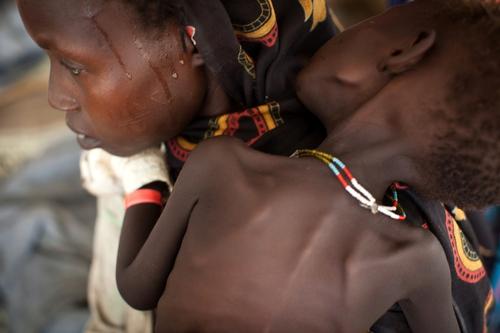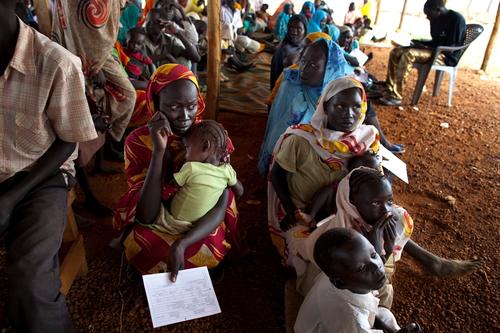Background
Following 22 years of civil war, South Sudan seceded from Sudan in July of 2011. Despite the secession, fighting continues in some areas along the new border. South Kordafan is a region of the Sudan, but much of its population, especially those living in the Nuba mountains, took the side of the South and the Sudanese People Liberation Movement (SPLM) during the war. There has been ongoing violence between SPLMNorth and troops from Khartoum since the South Sudan’s independence. Thus despite the Comprehensive Peace Agreement signed in 2005 and secession of the South in 2011, people of the Nuba mountains are crossing the border to seek refuge in South Sudan.
Although Yida Camp has been home to refugees from Sudan since South Sudan’s independence, the displaced population arriving in Yida has dramatically grown in recent weeks: from 17,000 population confirmed by census in mid-February to current UNHCR estimates of 60,000. The timing of the influx links to the re-opening of a transport corridor in March 2012, deteriorating conditions in the Nuba Mountains and a food shortage resulting from inability to plant and harvest due to increased violence.
Yida is normally inhabited by a Dinka population of about 700 people. The refugee population has largely grouped into ‘bomas’ reflecting the organization in the Nuba Mountains. Respective boma leaders form part of the refugee council, precided over by a council leader, which has coordinators for specific areas such as health and education. Since the formation of the camp and clearing of a crude airstrip, non governmental organizations (NGO) have been supporting the growing number of refugees. The Operational Centre of Médecins Sans Frontières based in Paris (MSF-OCP) provides outpatient (OPD) and inpatient (IPD) services including nutritional support, in the camp.
There is no surface water source nearby Yida, and with only 5 of 7 water pumps operational in this camp of 9,000 square kilometres and 60,000 people, water supply is not meeting even minimum emergency standards. There are few private latrines and defecation in the open is common. Soap and jerry cans have been minimally distributed.
Based on MSF OPD and IPD statistics, severe diarrheal disease is a common problem. With hospital deaths in June and early July ranging between 2-5 per day, there was growing concern that, even if MSF was seeing most camp deaths, mortality rates, particularly among children under 5 years of age, were close to emergency thresholds.
Despite the presence of several humanitarian actors, at the time of this survey, the camp had not been mapped nor was mortality officially monitored.
In response to increasing concern about the mortality in the camp, MSF requested Epicentre to conduct a baseline survey in the camp.





